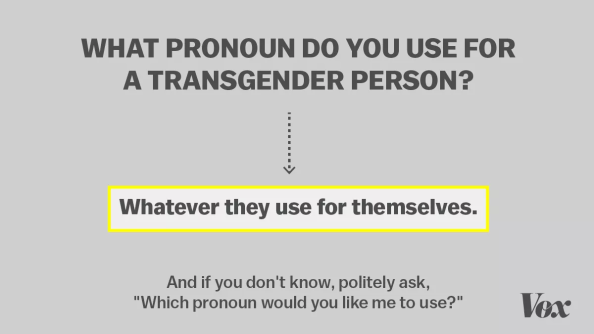Anti-trans activists fudge OIA statement – Report
.

.
An Official Information Act (OIA) response released to this blogger appears to confirm suspicions that anti-trans-activists mis-represented six cases of trans-women prisoners allegedly involved in violent incidences in Women’s correctional facilities.
The OIA response from the Corrections Department, was first released to persons unknown (see original document, with recipient redacted) in September last year. The recipient asked several questions related to trans-gender women (male-to-female) prisoners held in Women’s prisons:
- How many trans-identified males are in New Zealand prisons.
- How many are in for violent crimes, including sexual assault?
- How many trans-identified males are in women’s prison’s?
The ‘loaded’ language of the questions pointedly referred to “trans-identified males” instead of the more common-usage of “trans-gender women” by the LGBTQI community.
This is a strong indication that the unknown recipient had their own bias on the issue of trans-gender men and women. The unknown recipient was setting the narrative by not correctly address trans prisoners in women’s prisons as trans-women.
It may also have created some confusion in the mind of the author of the OIA response;
“As your request focuses on ‘trans-identified males’ in prisons, each of these questions has been interpreted to relate to transgender individuals who may have been assigned female at birth, but identify as male.”
It is apparent, though, that the unknown recipient actually had in mind “assigned male at birth, but [who later] identify as female”.
The Corrections OIA response states;
“Custodial staff are also being provided with training material to develop an understanding of gender diversity, with a focus on the use of correct pronouns and appropriate language.”
Mis-use of correct pronouns and appropriate gender terms has been prevalent by “gender critical” activists to the point where accurate meaning is obscured and becomes denigrating to trans-people. This appears to be deliberate.
Previous commentators on The Daily Blog and social media have also referred made reference to attacks on women by trans-“men” prisoners;
“six attacks on women by trans men in prison”
“Correction says that over the year there have been six attacks on women prisoners by these trans men who retain their male bodies”
“six women prisoners have alleged they were attacked by some of the men transferred into the women’s prison”
“I have an OIA from NZ Corrections. SIX women were assaulted by male-bodied people (who id as women) in the last 24 months. NO women assaulted a male-bodied person”
One commentator asserted, inaccurately;
“Some men are imprisoned for committing violent crimes against women. If they are trans in prison they may be attacked themselves. Corrections have moved to protect these people by transferring them to women’s prisons.”
– though this was later retracted by the same person, admitting it could not be substantiated.
However, the OIA response from Corrections does not verify the allegations. Corrections has clarified the issue by pointing out;
“… no transgender individual housed at a women’s prison (either identifying as male, or female) has been convicted of sexual offences.”
There has been no reported instance of a ‘Karen White‘-type assault in New Zealand. In the case of British sex-offender, “Karen White”, Jenny-Anne Bishop, from the UK transgender rights group Transforum, was highly critical of the way in which White was not correctly assessed, nor that White’s sexual offending against women and children had not been more rigorously considered.
In Britain, Ms Bishop, said;
“The case boards* are a good way of doing things – you can’t say the system is wrong when it goes wrong once. It is almost the exception that proves the rule – you’ve just got to look at what went wrong and make sure it doesn’t happen again. No system is perfect. It’s human nature that people will sometimes get it wrong.”
(* A local transgender case board consisting of prison managers and psychologists who decide where to place trans-identifying prisoners – eg; “Karen White” – within three days of incarceration.)
In New Zealand, Corrections has stated that a trans-gender prisoner who has been convicted of a sexual offence against a person of their own nominated gender would not be placed alongside prisoners of their nominated-gender;
“A transgender prisoner whose detention relates to a serious sexual offence against a person of their nominated gender, or who was released from a prison sentence for such an offence within the last seven years, will not be eligible to apply to the Chief Executive [for placement in accordance with their nominated gender].”
At no point have “gender critical” activists publicised this salient point from the OIA release.
The claim that there have been “six attacks on women by trans men in prison” (ie, trans-women) has also not been fully confirmed by the OIA release.The statement confirms six alleged assaults;
“A total of six prisoner on prisoner assault incidents occurred in women’s prisons from January 2017 to the date of your request, where the prisoner alleged to have committed the assault had a transgender alert.”
There is no clarity provided as to the circumstances of the alleged assaults. No incident reports have been attached with the OIA release. There is no indication what investigations were carried out or what findings, if any, were made.
All we are told is that there were six incidents and the prisoner(s) involved “had a transgender alert“. There are several questions that remain unanswered;
- How many trans-gender people were involved? One? Six? Is it the same person involved in all six incidences? Or six people in one incident each?
- Were the alleged assaults made on CIS women, or were trans-prisoners involved in incidences involving each other?
- And were these incidences cases where the trans-gender person was the instigator, or self-defence against harassment or assault by another person?
- What was the nature of the assault? A shove; a slap/punch; a life-threatening attack?
The Corrections Dept OIA release breaks down the number of transgender prisoners in women’s facilities’
“Of the 33 transgender prisoners mentioned above, 26 were housed in a men’s prison, and 7 were housed in a women’s prison.”
Interestingly, one of those seven was a trans-man (assigned female at birth, but identifies as male);
“One transgender prisoner in a women’s prison is recorded as identifying as a male.”
There is no indication whether this female-to-male trans-prisoner was involved in any of the six incidents.
It is a struggle to understand how “gender critical” activists can make a case against housing trans-women in Women’s prisons based on such a profound lack of clear evidence.
What is clearly understood is a history of trans-people suffering harrasment, assaults, sexual violation, and worse within prisons in New Zealand and overseas. For “gender critical” activists to now target trans-people as threatening women in “safe places” such as prisons is disturbing.
Prisons are already brutal institutions where ongoing brutalisation takes place on a daily basis. Page 84 of the 2016/17 Corrections Dept Annual Report reveals that in the 2016/17 financial year, there “were almost 1,500 non-serious/no injury assaults (on prisoners and staff)”, twentyfive of which were serious prisoner-on-prisoner assaults.
There is no break-down on gender, ethnicity, age, location of facility, etc.
That is not to say that women’s (and men’s) prisons should not be made safer. It is our social responsibility to ensure that people whose lives have been damaged and de-railed (often from a very early age), and then incarcerated by the State, are not brutalised any further. It serves no useful purpose to see prisoners eventually released into the community more bitter and violent than when they went in.
Focusing on six transgender prisoners out of a prison population of approximately ten thousand is unhelpful. Re-victimisation of an already marginalised minority is something that is no longer acceptable in New Zealand.
Whatever point “gender critical” activists have attempted to make with those three loaded OIA questions, and the subsequent mis-representation of the response from Corrections, has been lost in a swirling miasma of irrational transphobia.
They have not helped their case one iota.
.
.
.
References
Corrections Dept: OIA statement on transgender prisoners – 3.9.2018
Radio NZ: Sex self-identification debate a ‘cesspool of harmful stereotypes’
Snopes: Did a Male Rapist Who Identifies as Female Transfer to a Women’s Jail and Assault Female Inmates?
The Guardian: Karen White – how ‘manipulative’ transgender inmate attacked again
Corrections Dept: Annual Report 2016/17(p84)
Previous related blogposts
Fairfax media and Kiwiblog revise incorrect story denigrating trans-people
Apartheid in Aotearoa New Zealand – yes, it does exist
.
.
.

.
.
This blogpost was first published on The Daily Blog on 12 March 2019.
.
.
= fs =


For an example of misrepresentation, look no further than than the Corrections official’s use of the terms “assigned female/male at birth,” as though “male” and “female” were merely random categories arbitrarily imposed on a person by the adults present at their birth. It’s a bullshit term in the service of a lie.
You are correct to say that “All we are told is that there were six incidents and the prisoner(s) involved “had a transgender alert“. There are several questions that remain unanswered…” Until those questions are answered, we don’t know whether the feminists who asked for this information are peddling malicious rumour or expressing justified concern. Maybe we should hold off expressing views about them until they’ve done some follow-up questions and had the answers?
At the very least, Milt, there has to be clarification on these issues.
The way that the OIA response was inaccurately presented by those who requested it, irked me considerably. The purpose of the Official Information Act is to release information to the public so we are better informed. Mis-using it as has been done subverts the process.
But one thing that this entire episode has achieved is to reveal those responsible as less than reliable.
Unfortunately, that may be harder than first glance. In this case Corrections has denied further details on privacy grounds. So we may never be aware of Who/What/Where/How.
We may simply have to rely on Corrections policy;
Which is less than satisfactory.